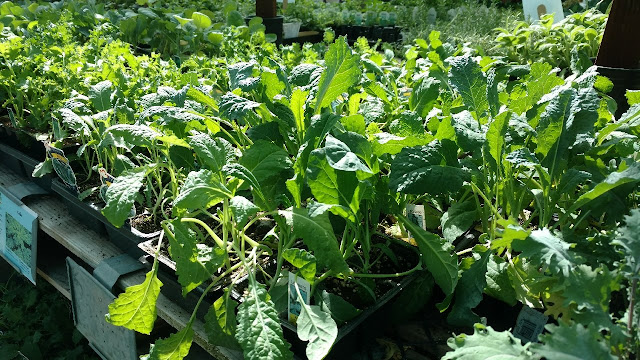

|
|
Plant kale and other leafy greens now — not tomatoes. Remember to protect tender seedlings. (Photo: Debbie Arrington)
|
This is why you don’t plant tomatoes in February. It’s still winter!
Need a reminder? We’re about to get one.
According to the
National Weather Service
, Sacramento can expect frosty nights coming soon. Rain? That’s still a question mark.
But change is in the air, says the weather service, with an “unsettled weather pattern” starting Monday.
After enjoying spring-like temperatures in the high 60s and record warmth only a week ago, Sacramento will see several days in the 50s and more typical February weather. Overnight lows will plunge down into the low 30s with possibilities of frost on Wednesday and Thursday nights – especially in the foothills.
Gusty winds of 20 to 30 mph are expected Monday and, with them, the threat of winter wildfires. Brush is tinder dry. Be careful using power tools outdoors; one spark can start a blaze.
What about rain? A storm system is expected to dust the Sierra with a little fresh snow late Monday and early Tuesday. The foothills may see showers, but Sacramento’s chance of rain from that system is estimated at only 5 to 10%, say the forecasters.
If no measurable precipitation falls before Monday, Sacramento will set a record for longest dry streak during what’s supposed to be our rainy season. Sunday will tie the current record of 44 consecutive rainless days, set in 1976.
As for frost, protect any tender seedlings or frost-sensitive plants such as succulents. That includes covering new transplants with large water bottles, gallon milk jugs or other clear plastic containers. Leave an opening for plants to breathe.
Find more
frost tips here
.
This weekend, take the opportunity to deep water, especially citrus, shrubs and perennials. Camellias could really use a drink. This pre-frost irrigation will help plants cope with cold, too.
If you feel the urge to plant something, choose kale or other cool-season greens. Leave the tomatoes indoors where it’s warm for at least a few more weeks.
Comments
0 comments have been posted.Sacramento Digs Gardening to your inbox.
Food in My Back Yard Series
April 29: What's (already) wrong with my tomato plants?
April 22: Should you stock up on fertilizer? (Yes!)
April 15: Grow culinary herbs in containers
April 8: When to plant summer vegetables
April 1: Don't be fooled by these garden myths
March 25: Fertilizer tips: How to 'feed' your vegetables for healthy growth
March 18: Time to give vegetable seedlings some more space
March 11: Ways to win the fight against weeds
March 4: Potatoes from the garden
Feb. 25: Plant a fruit tree now -- for later
Feb. 18: How to squeeze more food into less space
Feb. 11: When to plant? Consider staggering your transplants
Feb. 4: Starting in seed starting
Sites We Like
Garden Checklist for week of May 4
Enjoy this spring weather – and get gardening!
* Plant, plant, plant! It’s prime planting season in the Sacramento area. Time to set out those tomato transplants along with peppers and eggplants. Pinch off any flowers on new transplants to make them concentrate on establishing roots instead of setting premature fruit.
* Direct-seed melons, cucumbers, summer squash, corn, radishes, pumpkins and annual herbs such as basil.
* Harvest cabbage, lettuce, peas and green onions.
* In the flower garden, direct-seed sunflowers, cosmos, salvia, zinnias, marigolds, celosia and asters. (You also can transplant seedlings for many of the same flowers.)
* Plant dahlia tubers. Other perennials to set out include verbena, coreopsis, coneflower and astilbe.
* Transplant petunias, marigolds and perennial flowers such as astilbe, columbine, coneflowers, coreopsis, dahlias, rudbeckia and verbena.
* Keep an eye out for slugs, snails, earwigs and aphids that want to dine on tender new growth.
* Feed summer bloomers with a balanced fertilizer.
* For continued bloom, cut off spent flowers on roses as well as other flowering plants.
* Add mulch to the garden to maintain moisture. Mulch also cuts down on weeds. But don’t let it mound around the stems or trunks of trees or shrubs. Leave about a 6-inch to 1-foot circle to avoid crown rot or other problems.